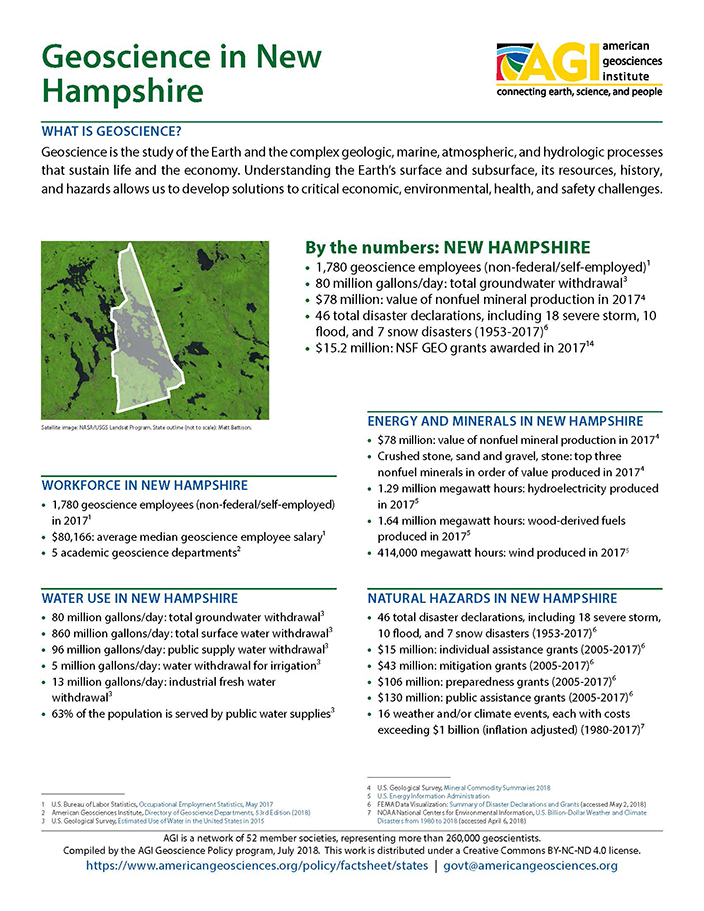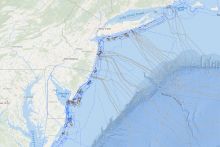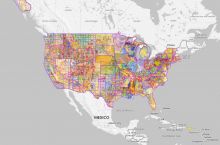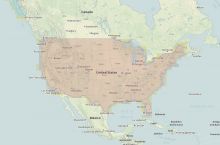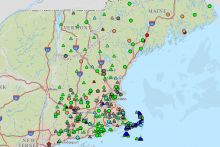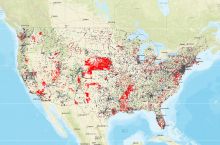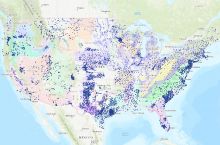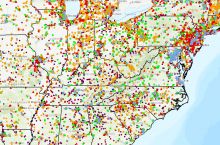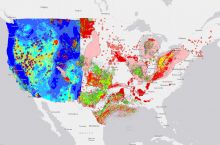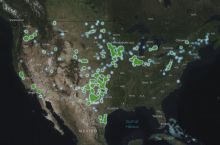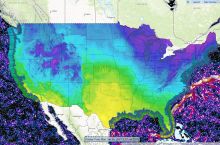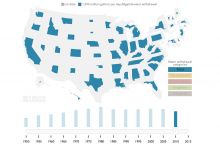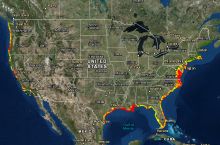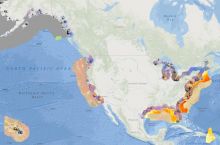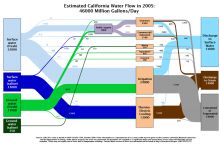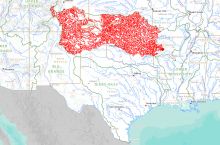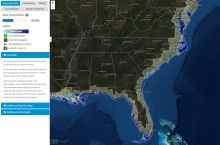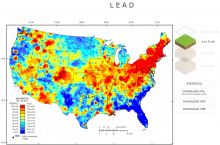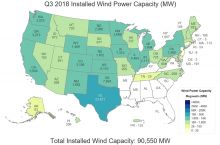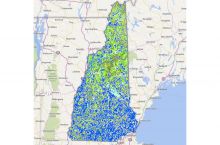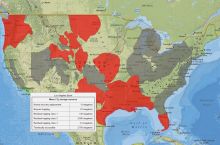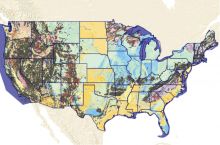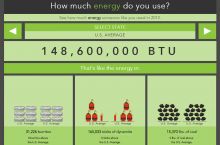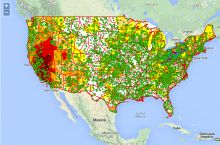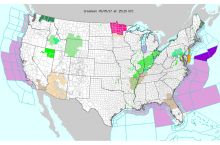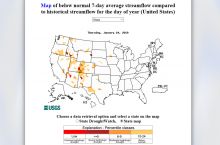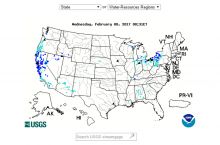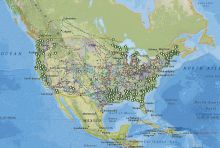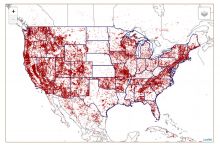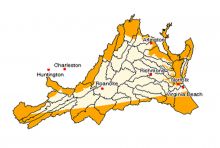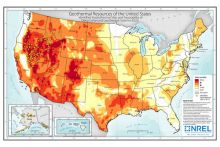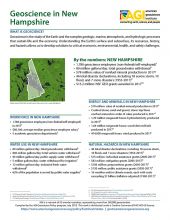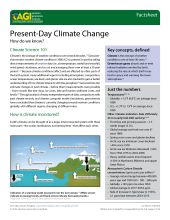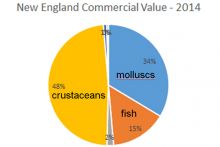By the numbers: New Hampshire
- 1,780 geoscience employees (excludes self-employed)1
- 80 million gallons/day: total groundwater withdrawal3
- $78 million: value of nonfuel mineral production in 20174
- 46 total disaster declarations, including 18 severe storm, 10 flood, and 7 snow disasters (1953-2017)⁶
- $15.2 million: NSF GEO grants awarded in 201714...
Agencies Working on Geoscience Issues in new hampshire
The protection and wise management of the state of New Hampshire’s environment are the important goals of the NH Department of Environmental Services (NHDES). The department’s responsibilities range from ensuring high levels of water quality for water supplies, ecological balance, and recreational benefits, to regulating the emissions of air pollutants, to fostering the proper management of municipal and industrial waste, to managing water resources for future generations.
The New Hampshire Geological Survey's mission is to collect data and perform research on the land, mineral, and water resources of the state, and disseminate the findings to the public through maps, reports, and other publications.
New Hampshire Homeland Security and Emergency Management (HSEM) is the state agency responsible for coordinating the planning for, responding to and recovery from major natural and manmade disaster. HSEM is part of the New Hampshire Department of Safety and is the state-level equivalent of the Federal Emergency Management Agency.

